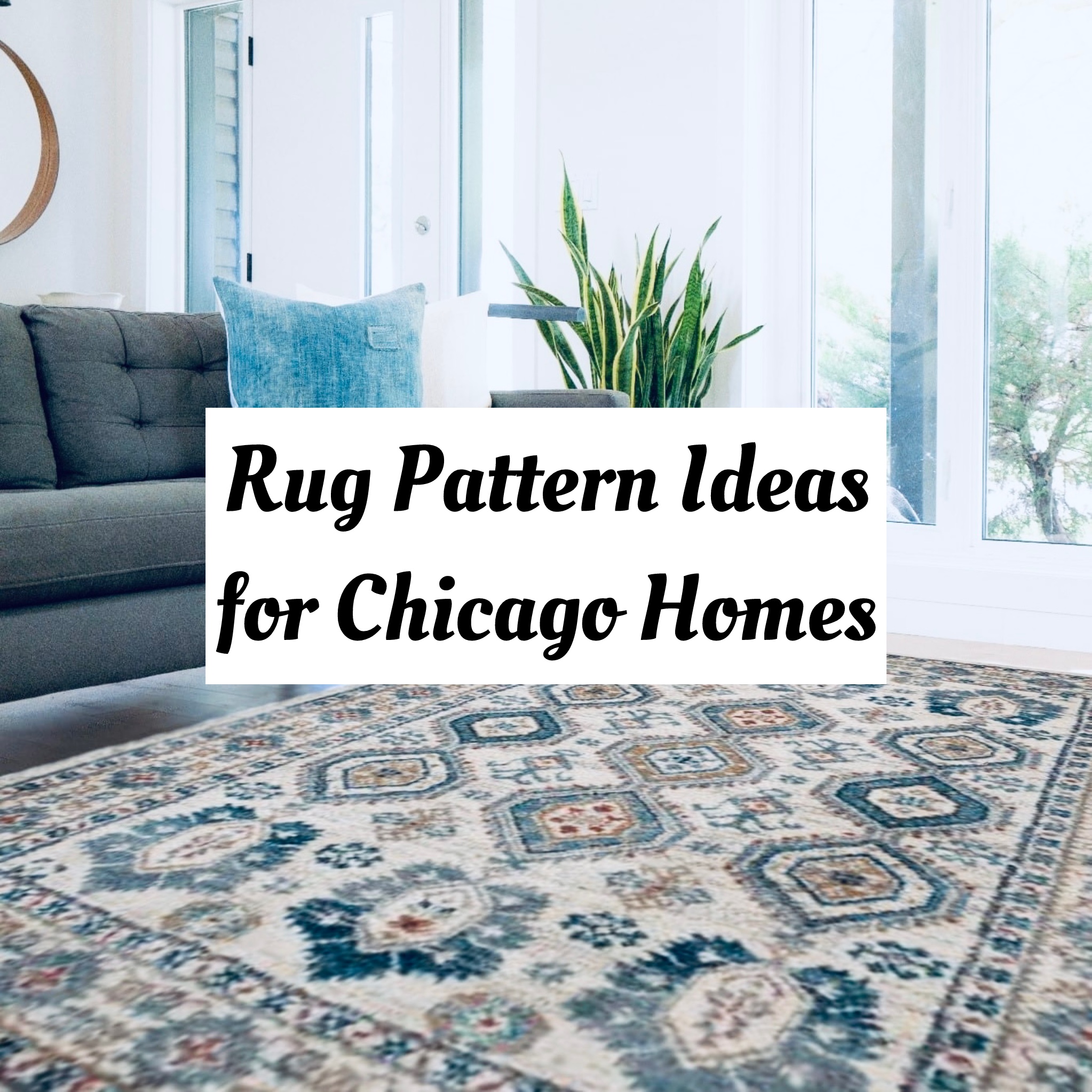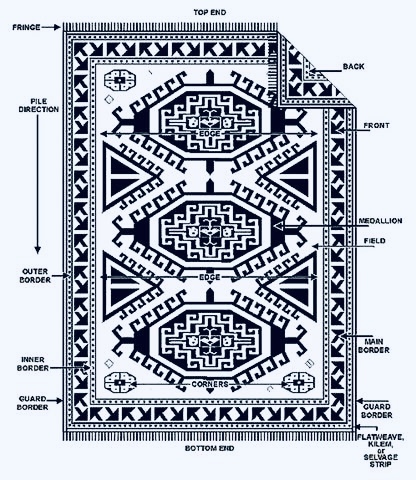Rug Pattern Ideas for Chicago Homes | Geometric, Floral, Oriental Design Guide
Pattern Power: How Rug Designs Shape the Look of Chicago Interiors
In interior design, we often talk about color and texture as the building blocks of a beautiful room. Color sets the mood, and texture adds comfort and depth. But it’s pattern that tells the story. Pattern is the voice of your room; it’s the element that injects energy, personality, and a sophisticated, curated feel.
For Chicago interiors, with our distinct, bold architecture and long winters, pattern is our secret weapon. It’s how we add life and visual interest to our spaces, preventing them from feeling flat. A well-chosen pattern can make a small room feel larger, a large room feel cozier, or a neutral room feel dynamic. But with so many rug pattern ideas to choose from, where do you start?
This guide will walk you through the power of pattern, from classic to contemporary, and help you find the perfect design to complement your unique Chicago home.

The Great Debate: Classic vs. Modern Patterns
Understanding the “language” of different patterns is the first step. Each category has its own psychology and impact on a room.
Geometric, Tribal, and Art Deco
Geometric patterns are built on repetition, lines, and shapes—think stripes, chevrons, diamonds, and grids. They create a sense of order, rhythm, and structure.
- Modern Geometrics: Clean, crisp lines are a hallmark of modern rug designs Chicago homes love. They can be bold and high-contrast (like a black and white stripe) or subtle and tone-on-tone.
- Art Deco: With Chicago’s rich architectural history, Art Deco-inspired patterns (fans, sunbursts, and stepped designs) are a perfect nod to our city’s heritage.
- Tribal: Patterns from Moroccan, Kazak, or Southwestern traditions are a type of geometric. Their hand-drawn, imperfect lines add a layer of human history, warmth, and a well-traveled feel.
Floral & Organic Patterns
Where geometrics create structure, florals create flow. These patterns are built on curvilinear, natural shapes that break up the hard, straight lines of furniture and walls.
The geometric vs floral rugs debate is really about the mood you want:
- Traditional Floral: Classic Persian and Oriental rugs often feature intricate, scrolling vines and floral motifs. These are timeless, elegant, and masterful at hiding daily wear.
- Modern Floral: This isn’t your grandmother’s floral. Think large-scale, abstract “watercolor” blooms or simple, repeating botanical shapes. They add a soft, artistic, and often more feminine touch to a room.
Oriental & Persian Patterns: The Storytellers
A true Oriental or Persian rug is more than just a pattern; it’s a piece of art with a rich history. Understanding the oriental patterns meaning adds a new layer of appreciation.
- Medallions: A large, central medallion is a classic feature that acts as a focal point, anchoring the furniture in a formal seating or dining area.
- All-Over (Herati) Patterns: A repeating field of small motifs (like the “Herati” or fish pattern) is fantastic for high-traffic areas. The busy pattern is incredibly forgiving and adds a uniform, rich texture.
- Symbolism: These rugs are woven with a symbolic language. A boteh (paisley) can represent a seed and potential, while a lotus flower can symbolize rebirth. Owning one is like owning a piece of history.
Click HERE to learn more about oriental rugs!
Matching Rug Patterns to Chicago Décor Styles
The right pattern is the one that complements your home’s unique architecture and style.
The Urban Industrial Loft (West Loop or South Loop)
- The Space: Exposed brick, concrete floors, metal beams, and open-concept layouts.
- The Pattern: These spaces need a powerful anchor. A distressed, large-scale Oriental rug creates a stunning “Persian-chic” contrast against the industrial elements, adding warmth and soul. This is one of the best ways to prove that oriental motifs are suitable for contemporary interiors. Alternatively, a bold, oversized geometric pattern can define the space and match the grand scale.
The Mid-Century Modern Home (Evanston or North Shore)
- The Space: Clean lines, warm wood tones (like teak and walnut), and a focus on form.
- The Pattern: Your rug should complement, not compete. Look for low-pile geometric patterns, subtle abstract shapes, or Scandinavian-inspired designs. A simple, textured stripe or a sparse “Sputnik-era” graphic is a perfect fit.
The Classic Greystone (Lincoln Park or Wicker Park)
- The Space: Vintage character, formal rooms, intricate moldings, and dark hardwood floors.
- The Pattern: Embrace the home’s history. This is the perfect setting for a classic floral or intricate Oriental rug. The rich colors and traditional design feel intentional and harmonious with the architecture.
The Lakefront Modern High-Rise (Gold Coast or Streeterville)
- The Space: Floor-to-ceiling glass, stunning city views, and clean, neutral palettes.
- The Pattern: The view is the star. Your rug should add luxury and texture without being a distraction. The best modern rug designs for Chicago high-rises are often subtle, abstract patterns that look like a watercolor painting, or a tone-on-tone, textured geometric.
A Designer’s Guide to Balancing Pattern, Color, and Scale
Ready to choose your pattern? Here are the rules designers follow to get it right.
- The “One Bold Statement” Rule This is the most important rule for how to balance bold patterns with existing furniture. If you have a bold, multi-colored patterned rug, your sofa and chairs should be a solid color. If you have a floral-print sofa, your rug should be a simple texture or a very subtle stripe. Let one element be the star of the show.
- Mind Your Scale and Proportion The scale of the pattern must match the scale of the room. A tiny, intricate pattern can look “fussy” or disappear in a large, open-concept loft. Conversely, a massive, bold pattern can overwhelm a small den.
- Large Rooms: Can handle large-scale, bold geometric or floral patterns.
- Small Rooms: Often benefit from small-to-mid-sized patterns or simple stripes that can visually elongate the space.
- Harmonize Color and Texture Pattern doesn’t exist in a vacuum. A bold pattern in a neutral, monochromatic color (like a gray-on-gray geometric) can feel very subtle and textural. A simple pattern (like a stripe) in high-contrast colors (like black and white) can feel incredibly bold.
- Your pattern must work with your room’s color story. Find your perfect match in our Chicago Color Pairing Guide.
- The pattern’s impact is also tied to its feel. A busy pattern often works best on a low-pile or flatweave texture to keep it from feeling overwhelming.
- Finally, no pattern will look right if the rug is the wrong size. Ensure your placement and size are perfect with our designer’s guide.
Find Your Perfect Pattern at Rouzati Rugs
Pattern is the final, essential piece of your home’s design puzzle. It’s your signature, your room’s personality. Whether you’re drawn to the clean lines of a geometric, the soft flow of a floral, or the deep history of an Oriental rug, the perfect pattern is waiting to tie your space together.
Don’t guess. The best way to find your pattern is to see it in person. We invite you to visit our showroom, where you can unroll our collections and see how different designs interact with light.
Visit our Chicago-area rug store in Evanston and let our design experts help you find the pattern that speaks your language.

